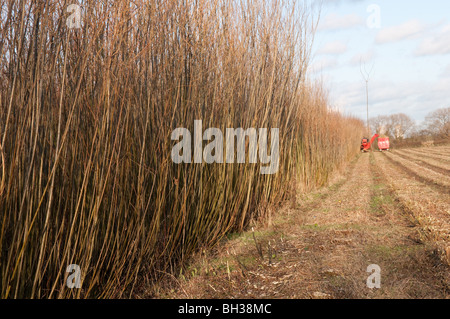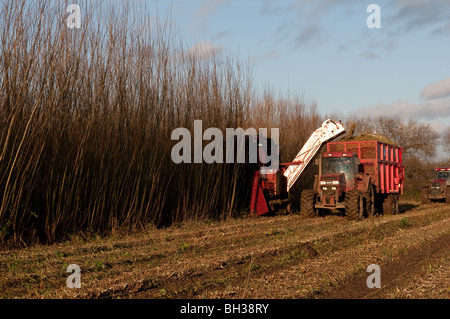

energy crops are planted as 1-year-old cuttings at around 1 m spacing. The limited findings on bird use of energy grasses that do exist are highlighted in the Discussion. This paper therefore concentrates on SRC crops where work has been done. Little work has been done on the use of energy grass crops by birds or other wildlife here or elsewhere in Europe ( RCEP 2004, but see Semere & Slater 2005). The main objective of this paper is to provide an up-to-date insight to the likely impact of commercial cropping of SRC on birds. For example, it is likely that these crops, if widely planted, will have a major impact on farmland biodiversity ( RCEP 2004). The development of these incentives is to some extent influenced by the environmental impacts that these crops may have. These incentives could lead to a substantial increase in the area devoted to biomass crops in the UK. In England, grants are available under the Energy Crops Scheme for establishing and managing biomass crops, and similar grant aid is, or will be, provided by the devolved administrations ( Forest Research 2005). When grown on non-set-aside land eligible for the single payment, an additional energy crops payment also can be claimed ( Anon 2005). SRC and Miscanthus are eligible for the single farm payment and may be grown on set-aside under the 2003 CAP reform non-food regime. The UK government provides incentives to plant these crops in England as part of a wider strategy to increase the contribution of renewable energy sources ( Anon 2005). There were around 2000 ha of SRC at 300 sites and around 400 ha of Miscanthus at 60 sites in 2002 ( CSL 2003). Within each group, short-rotation coppice (SRC) and Miscanthus grass are the most advanced agronomically, and in terms of plantings, the most common ( CSL 2003, RCEP 2004). There are two types of biomass or energy crops currently envisaged for UK farmland: coppiced shrubs, and grasses ( RCEP 2004). The scope for agri-environment schemes to include energy crops is discussed.

However SRC crops are often weedy and insect rich and hence have potential as foraging habitats in summer and winter. We do not know if species commonly recorded in these crops survive and breed well so population effects are unknown. The impact of large regional energy crop developments on birds is not known. Equivalent census data for energy grasses in the UK are not available. Yellow Wagtail Motacilla flava and certain locally occurring farmland specialists may be displaced by SRC plantations. Overall, more individuals and species were recorded in and around SRC than equivalent arable or grassland throughout the year.
#Willow short rotation coppice plus#
In winter, the same resident species occured in SRC as the summer, plus winter migrants such as Snipe Gallinago gallinago and Fieldfare Turdus pilaris. The interior of large SRC plots contained fewer birds than the edge-zone (< 50 m). Birds were more abundant in hedgerows next to SRC than in those adjoining arable or grass. Some species characteristic of scrub and wood-type habitats were attracted onto farmland by SRC. Even farmland specialists such as Skylark Alauda arvensis used cut SRC fields. For willow SRC, most existing farmland species were not completely displaced by SRC cropping. We use the findings of this study, in the context of other work on birds in energy crops, to suggest how birds may be affected by commercial cropping of SRC or energy grasses on UK farmland. The study sites were linked to the first commercial wood-fuelled electricity plant in Yorkshire and were managed commercially.
#Willow short rotation coppice full#
Click here to read the full document.We present the results of spring and winter surveys of birds using 22 willow short-rotation coppice (SRC) fields and 22 paired arable or grassland controls over a 5 year period in central and northern England. The focus for willow opportunities in NZ will initially focus on providing land owners a new land use option with a potential for revenue as land is forced to change to uses which have less nutrient leaching and run-off in two distressed lake catchments in the Central North Island. SRC willow could also be used to treat waste water high in nutrient levels. SRC willow is a sustainable land use in catchments where traditional farming land use reduces lake water quality through nitrification of the eco-system. Short Rotation Coppice willow provides an opportunity to widen the sources of biomass for heat and transport fuels. A key energy demand is liquid transport fuels derived from oil, which has been identified as both a risk and opportunity. Biomass currently only supplies a limited portion of primary energy, mostly as wood for heat in the wood processing sector. New Zealand is dependent on domestic and imported fossil fuels for heat and transport energy. Promising resources and systems for producing bioenergy feedstocks


 0 kommentar(er)
0 kommentar(er)
